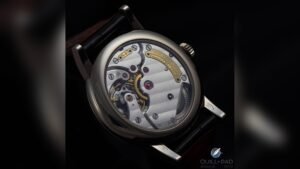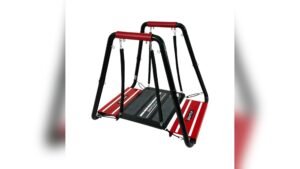Are self-winding watches still made? If you’ve ever admired the smooth sweep of a classic watch hand or the clever mechanics hidden beneath its face, you’re probably wondering if these timeless pieces are still crafted today.
The good news is, yes—they definitely are. Whether you’re a watch enthusiast or just curious about how these elegant devices keep ticking without a battery, understanding the world of self-winding watches can change how you see time itself. Keep reading to discover why these mechanical marvels remain popular, which brands are leading the way, and how they fit into your life today.
Table of Contents
ToggleSelf-winding Watch Basics
Self-winding watches remain a fascinating part of watchmaking history and modern use. These timepieces use mechanical energy created by the wearer’s movements. This energy keeps the watch running without manual winding or batteries. Understanding the basics of self-winding watches helps appreciate their design and function.
How Automatic Watches Work
Automatic watches have a small weighted rotor inside. The rotor moves as the wearer moves their wrist. This motion winds the mainspring, which stores energy. The stored energy powers the watch’s gears and hands. It means the watch can run continuously with regular use. No need to wind the watch daily.
Key Components And Mechanics
The mainspring is the main energy source inside the watch. It slowly releases energy to keep time. The rotor is attached to the movement and spins freely. A gear train transfers power from the mainspring to the hands. A balance wheel controls the release of energy to keep accurate time. These parts work together to keep the watch ticking smoothly.
Modern Production Of Self-winding Watches
Self-winding watches remain popular in modern times. They combine classic craftsmanship with current manufacturing techniques. The production of automatic watches continues to thrive worldwide. Many brands offer a wide range of styles and prices. These watches appeal to both collectors and everyday wearers. Advances in technology improve their accuracy and durability. This keeps the tradition of self-winding watches alive and well.
Leading Brands Making Automatic Watches
Several top brands focus on automatic watches today. Rolex leads with its iconic Oyster Perpetual line. Omega offers the Seamaster and Speedmaster models with automatic movements. Seiko creates reliable and affordable self-winding watches. TAG Heuer blends sporty designs with precise mechanics. Patek Philippe produces high-end, handcrafted automatic timepieces. These brands maintain strong reputations for quality and innovation. Their watches attract enthusiasts across the globe.
Technological Advances In Design
Modern self-winding watches benefit from new technology. Improved materials like silicon reduce friction in the movement. Enhanced rotor designs increase winding efficiency during daily wear. Anti-magnetic components protect the watch from electronic interference. Better sealing techniques improve water resistance. Precision engineering lowers power consumption and extends lifespan. These innovations make automatic watches more reliable and user-friendly. They blend tradition with cutting-edge improvements seamlessly.
Hand-wound Watches Today
Hand-wound watches remain relevant in today’s watch market. These timepieces require the wearer to wind the crown manually. This act connects the user to the watch’s inner workings. Many brands continue to produce hand-wound models. They appeal to collectors and casual wearers alike. This type of watch combines tradition with craftsmanship. It offers a unique experience compared to automatic watches.
Reasons For Continued Popularity
Hand-wound watches offer a special connection to the past. Winding the watch daily creates a personal bond. This ritual makes the watch feel alive and cared for. They often feature simpler, slimmer designs. Without the rotor needed in automatics, cases can be thinner. Many appreciate the craftsmanship involved in manual movements. The precision and reliability attract those who value quality. Interest in mechanical watches is growing worldwide. Events and communities support this renewed fascination. Affordability is another reason for their popularity. Brands offer models across various price ranges. This accessibility helps new enthusiasts join the market.
Comparison With Automatic Watches
Automatic watches wind themselves using wrist motion. This convenience appeals to users who prefer less maintenance. Hand-wound watches need daily or regular winding. This might seem like a chore but many enjoy it. Automatics are usually thicker due to the rotor mechanism. Hand-wound watches are often slimmer and lighter. Both types can offer excellent accuracy and craftsmanship. Some collectors prefer hand-wound models for their simplicity. Others choose automatics for their ease of use. Ultimately, the choice depends on personal preference. Each style offers a unique watch experience.

Credit: watchesoff5th.com
Durability And Maintenance
Self-winding watches remain popular for their blend of tradition and technology. Their durability depends on careful maintenance. Proper care keeps these watches running smoothly for many years. Understanding how to maintain them ensures you get the most from your timepiece.
Lifespan Of Self-winding Watches
Self-winding watches can last decades with regular upkeep. The mechanical parts inside are built to endure constant motion. Many vintage watches still function perfectly after 50 years or more. Their lifespan depends on the quality of materials and craftsmanship. Regular servicing prevents wear and tear on delicate components.
Care Tips For Longevity
Keep your watch clean and dry to avoid damage. Avoid exposing it to strong magnets or extreme temperatures. Wear the watch regularly to keep the rotor moving and the mechanism wound. Store it safely when not in use, preferably in a watch box. Service your watch every 3 to 5 years at a professional center. Lubrication and cleaning during servicing protect the movement and extend life.
Design And Aesthetic Appeal
Self-winding watches remain popular for their unique design and visual appeal. These timepieces combine classic mechanics with modern style. Watchmakers craft each piece with care, focusing on both function and beauty.
Design and aesthetic appeal are key reasons collectors and everyday wearers choose automatic watches. Their look reflects the blend of tradition and innovation. Each watch tells a story through its shape, materials, and craftsmanship.
Slim Profiles And Mechanical Charm
Self-winding watches often have slim cases. This sleek design makes them comfortable on the wrist. Without the need for bulky batteries, the internal parts are more compact.
The visible movement inside many watches adds charm. Watch lovers admire the tiny gears and rotors in motion. This mechanical heart creates a sense of wonder and craftsmanship.
Many brands focus on creating thin watches that do not sacrifice style or precision. The slim profile suits both casual and formal looks. It also highlights the skill of the watchmaker.
Trends In Watchmaking Styles
Modern self-winding watches embrace a mix of vintage and contemporary trends. Classic round faces remain popular, often paired with minimalist dials. This creates a clean, timeless look.
Some designs include skeleton dials, showing off the inner workings. Others use bold colors or textured materials for a fresh style. Leather straps and metal bracelets continue to be favored choices.
Watchmakers experiment with new materials like ceramic and titanium. These add durability and a modern feel. The overall trend moves toward versatile, elegant watches that suit many occasions.
Community And Culture
The world of self-winding watches is more than just mechanics. It is a vibrant community where passion for craftsmanship lives. Enthusiasts gather to share stories and knowledge about these timeless pieces. This culture keeps the love for mechanical watches alive and thriving.
Watch Enthusiast Gatherings
Meetups and clubs bring watch lovers together regularly. People discuss brands, history, and watchmaking techniques. These gatherings create a space to see rare and vintage self-winding watches. Members exchange tips on care and maintenance. New collectors find guidance and support from experts. The shared excitement builds a strong bond within the community.
Events Celebrating Mechanical Timepieces
Events like watch fairs and exhibitions celebrate the art of self-winding watches. They showcase the latest models alongside historic pieces. Visitors learn about the intricate movements and design behind each watch. Workshops offer hands-on experience with watchmaking skills. These events inspire new generations to appreciate mechanical timepieces. The culture of self-winding watches continues to grow through such celebrations.
Choosing Between Manual And Automatic
Choosing between manual and automatic watches involves understanding how each type works and what suits your lifestyle. Both offer unique experiences and practical benefits. Deciding depends on your personal preference and daily routine.
User Experience And Connection
Manual watches require winding by hand. This daily ritual creates a strong bond with the watch. Many wearers enjoy feeling the movement come to life with each wind. It adds a personal touch and a sense of tradition.
Automatic watches wind themselves using your wrist motion. This means less effort is needed to keep them running. You wear it, and it stays powered. This convenience appeals to those who prefer low maintenance.
Practical Considerations
Manual watches need regular winding to keep accurate time. Forgetting to wind can stop the watch. This suits wearers who enjoy routine and care about precision.
Automatic watches work well for active users. They keep running as long as you wear them daily. If not worn, they may need manual winding or a watch winder to stay accurate.
Both types can last many years with proper care. Choose based on your daily habits and how you want to interact with your timepiece.

Credit: www.coveted.com

Credit: www.coveted.com
Frequently Asked Questions
How Long Will A Self-winding Watch Last?
A self-winding watch can last a lifetime with proper care and regular maintenance. Regular servicing ensures optimal performance and durability.
Are Manual Wind Watches Still Made?
Yes, manual wind watches are still made by many brands. They offer mechanical precision, a slim design, and a direct connection to the timepiece. Popular makers include Timex, Jaeger-LeCoultre, Omega, and Patek Philippe. Enthusiasts value their craftsmanship and tradition.
Are There Self-winding Watches?
Yes, self-winding watches, also called automatic watches, use a rotor that winds the mainspring with your wrist movement. They need no battery. Many brands still produce them due to their convenience, mechanical precision, and timeless design.
When Did We Stop Winding Watches?
We never fully stopped winding watches. Manual winding remains popular, with many brands still producing hand-wound mechanical watches today.
Conclusion
Self-winding watches remain popular today. Many brands continue to produce them. They offer convenience by winding automatically with movement. Mechanical watch lovers enjoy their craftsmanship and reliability. These watches blend tradition with modern style well. They suit people who appreciate classic timepieces.
Owning one connects you to watchmaking history. Maintenance keeps them working for many years. Self-winding watches are far from obsolete. They still hold a special place in watch collections.







